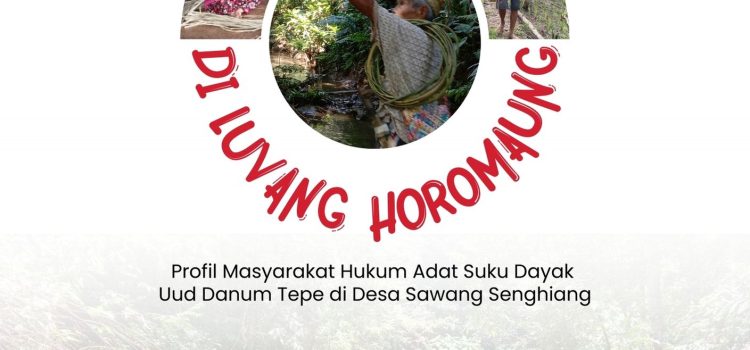
Menapak Jejak di Luvang Horomaung documents the experiences of Gemawan’s engagement with the Dayak Uud Danum Tepe community in Sawang Senghiang Village, Sintang Regency, West Kalimantan.
This book complements Gemawan’s long-term facilitation efforts to help the people of Sawang Senghiang secure their rights to forest management.
| Judul Buku | : | Menapak Jejak di Luvang Horomaung; Profil Masyarakat Hukum Adat Suku Dayak Uud Danum Tepe di Desa Sawang Senghiang |
| Penulis | : | Stefanus Kardi & Mohammad Reza |
| Penerbit | : | Lembaga Pengembangan Masyarakat Swandiri (GEMAWAN) |
| Tebal Halaman | : | xxii + 111 hlm |
| Ukuran Buku | : | 14,8 x 21 cm |
| ISBN (cetak) | : | 978-623-99027-2-8 |
Synopsis Menapak Jejak di Luvang Horomaung

Luvang Horomaung is the name of a customary forest located in the territory of the Indigenous Peoples (Masyarakat Hukum Adat, MHA) of the Dayak Uud Danum community in Kampung Tepe, Sawang Senghiang Village.
The name Luvang Horomaung means “tiger’s lair” in the local language, originating from ancestral stories that tell of a tiger living in harmony with the community’s forebears — a symbol of the balance between humans and nature, even though the tiger itself has long vanished from the area.
Through the Social Forestry Program, Gemawan has assisted the community in obtaining legal recognition of their forest management rights under the Customary Forest (Hutan Adat) scheme for the Luvang Horomaung area.
For generations, forest control has been dominated by capital owners. The Social Forestry Program provides a legal opportunity for local communities living in and around forest areas to benefit from forest resources, while also preserving their social structures and traditional wisdom.
The book also aims to document and preserve local knowledge passed down through generations of the Uud Danum Tepe people — knowledge that is essential to protecting their forest, culture, and way of life.
This publication would not have been possible without the support of the Sawang Senghiang Customary Council and the Village Government throughout the writing process.
Accesss the book here:
